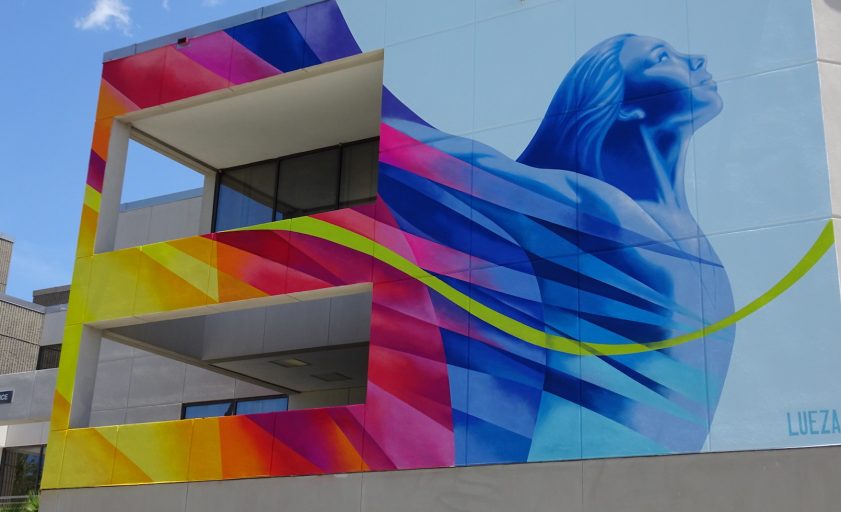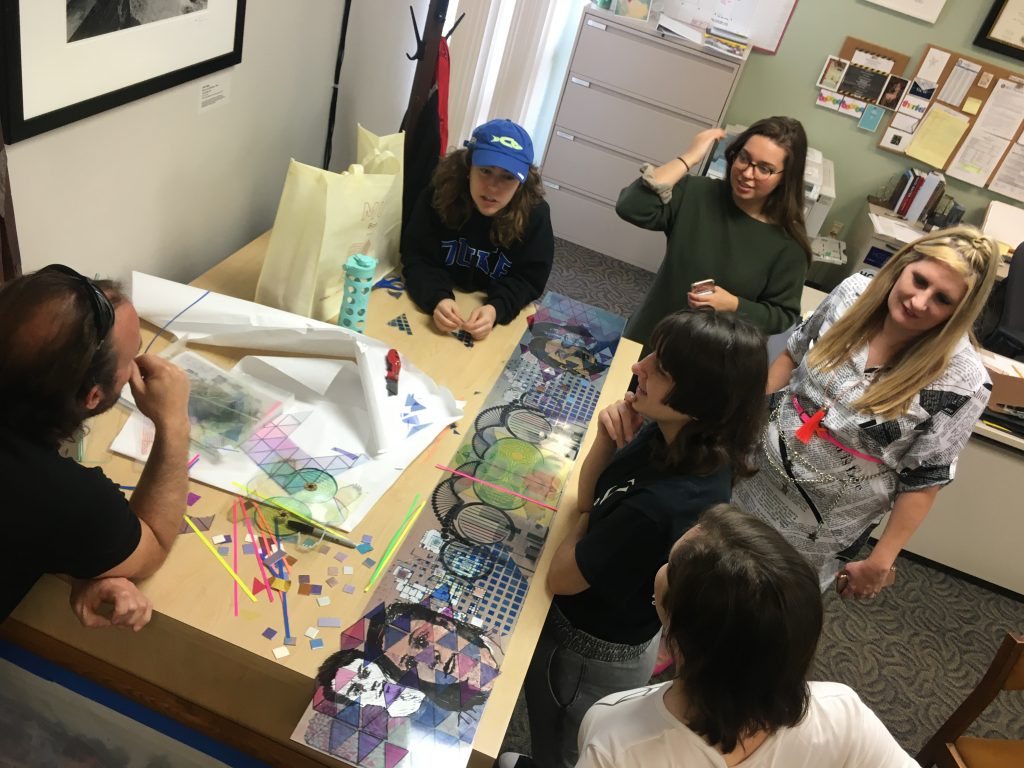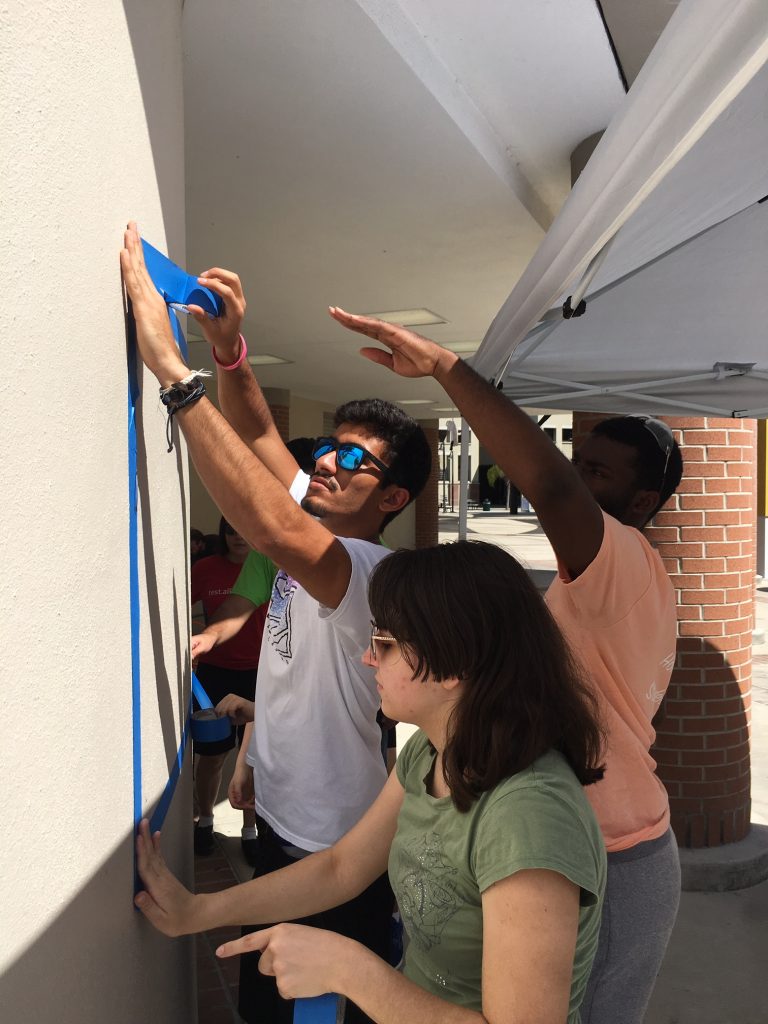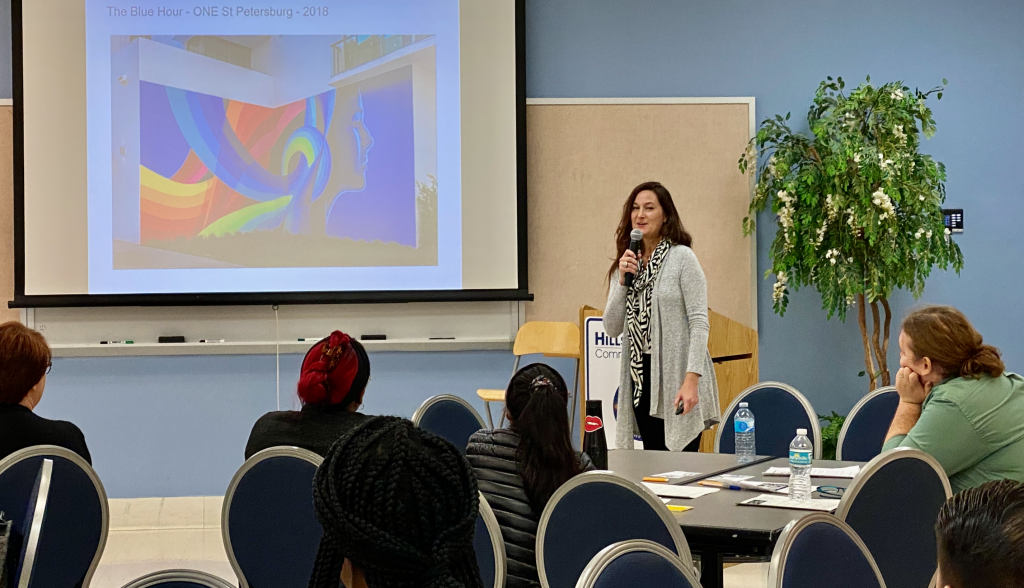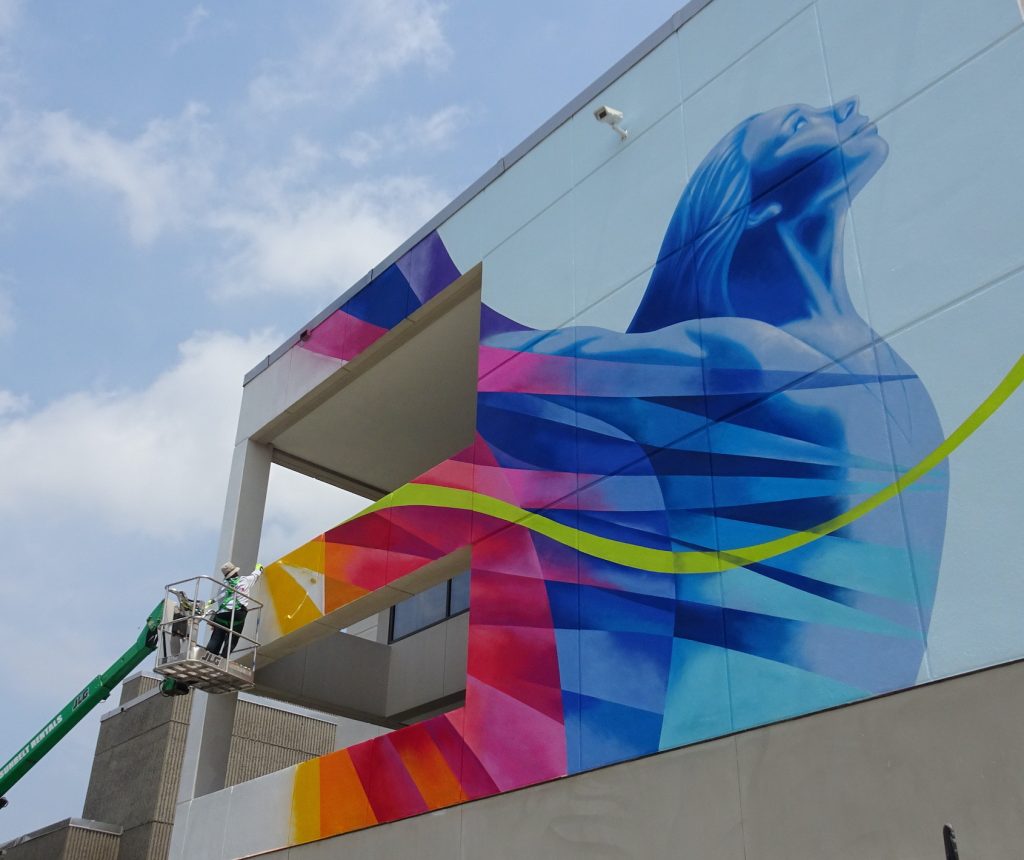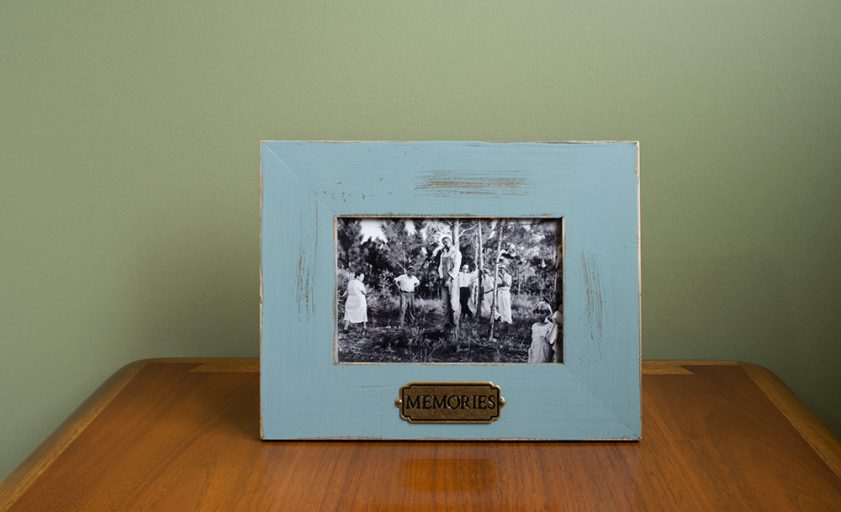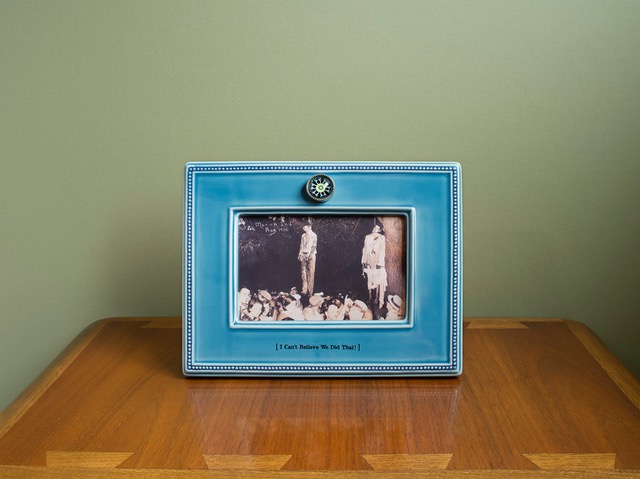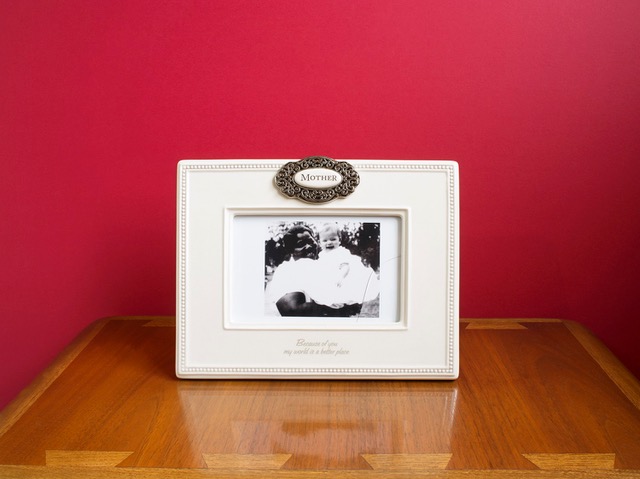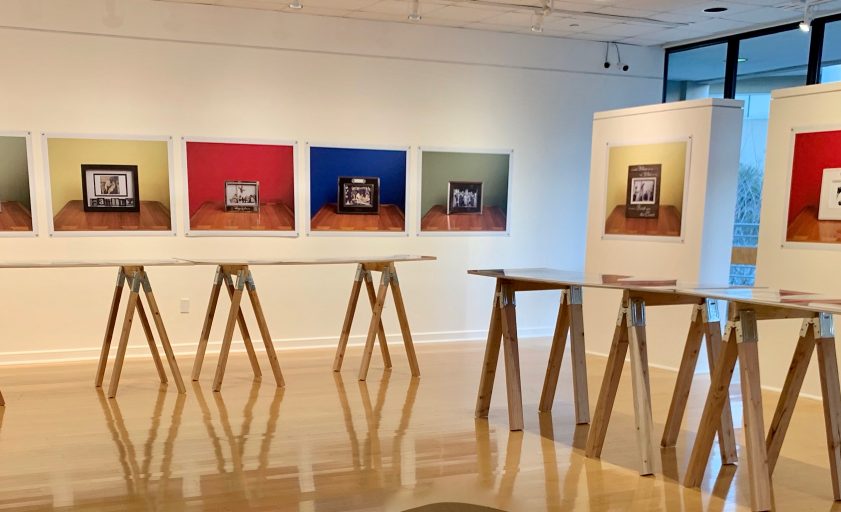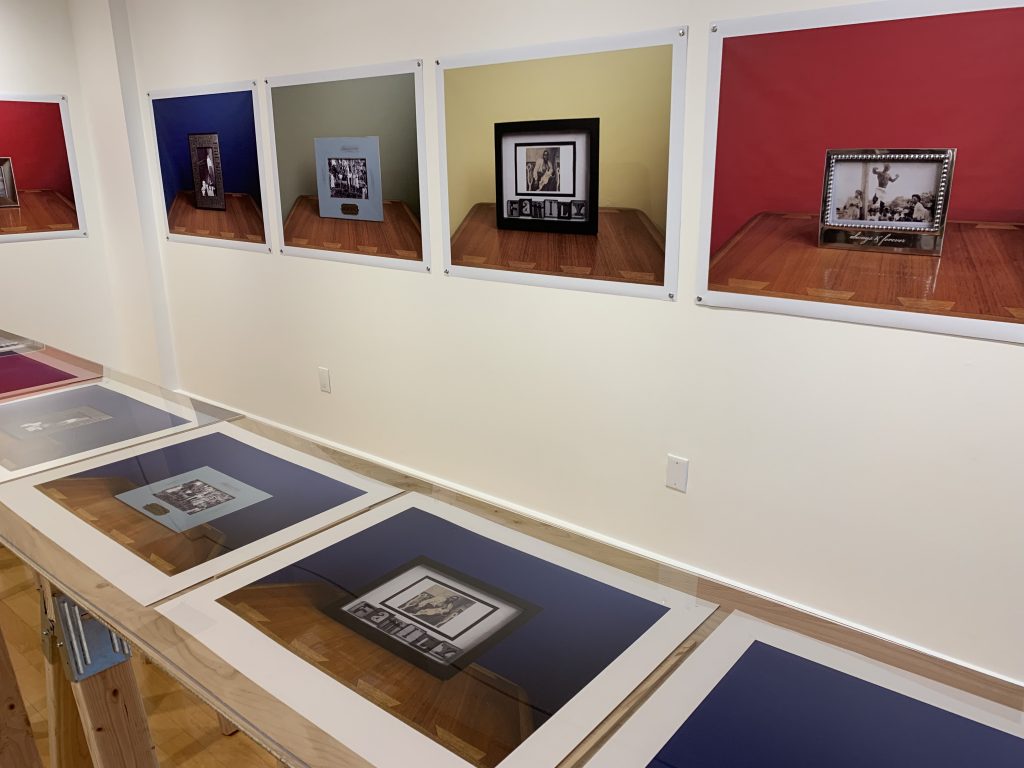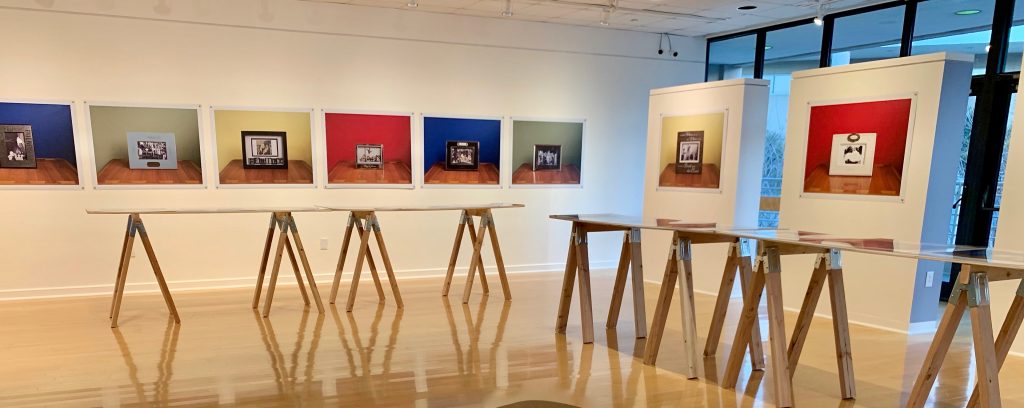When this article was written, the Public Art Committee and I were full of enthusiasm and anticipation. Months of meetings, preparation, and planning were beginning to culminate in the realization of a new mural and in a series of community-driven programs that would accompany the mural’s unveiling. Students and volunteers from the community were gathered to assist with the fabrication. However, with the arrival of COVID-19 in March, it was no longer safe for communities to gather the way we were used to, and many plans were suspended.
Despite all of this, creativity continued on. Cecilia Lueza safely worked alone to complete a vibrant mural, titled Exuberance, which exudes an uplifting message of well-being that feels all the more necessary in the midst of a pandemic. Once it is safe to gather together once again, we still plan on hosting events to celebrate the completion of Exuberance and to raise awareness of health and wellness resources for our community–and I, for one, am looking forward to that day!
Amanda Poss, Gallery Director, Gallery221@HCC Dale Mabry Campus
The 2019/2020 Grounds4Art@HCC
Health & Wellness Mural
by Jeffrey Rubinstein
Students, faculty, staff, and visitors to Hillsborough Community College’s Dale Mabry campus must be noticing a much higher presence of art, murals, and especially, student involvement in the college’s public art projects. Recently, HCC has also increased its footprint for health, wellness, and food security programs. With the ever-growing awareness of the connection between food security and academic performance, members of the HCC Public Arts Committee, Feeding Tampa Bay, Bay Art Files, and The City of Tampa Arts and Cultural Affairs joined forces and began meeting last year to design and create a large, visually engaging mural on the exterior of the Social Sciences building of the busy, urban Dale Mabry Campus in Tampa. The mural will be a permanent reminder that each of us must proactively sustain our well-being through health and wellness.
Under the direction of Gallery Director Amanda Poss, Gallery 221@HCC received a grant from the Arts Council of Hillsborough County for the 2019-2020 mural project. The project was conceived by the Grounds4Art@HCC initiative, HCC’s public art program, formed in 2018. Two other community-centric exterior mural projects have been completed to date, with more in the works as additional funding and sponsorships become available.

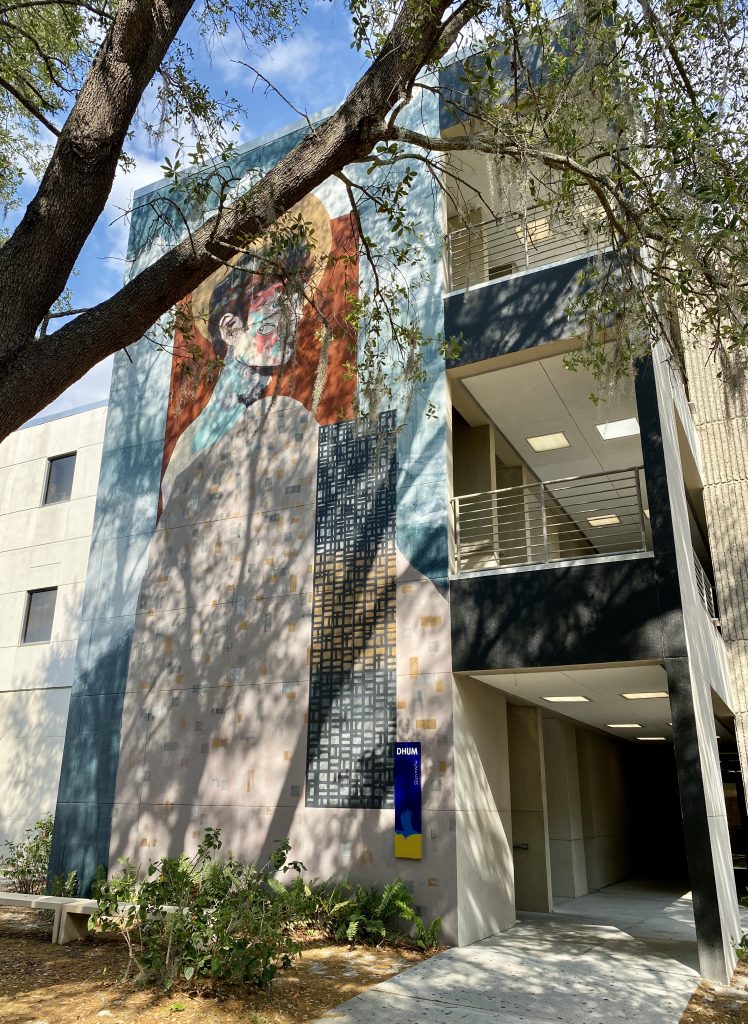
Egyptian artist Aya Tarek’s large-scale mural was the second public art project to be completed on the HCC Dale Mabry Campus. Tarek, a prolific artist who has created murals in Cairo, Berlin, São Paolo, and Portland, worked on campus with HCC students and community members to fabricate the mural. Titled Painting Ourselves Visible, the mural project and related programming sought to celebrate and increase the visibility of Arab, Middle Eastern/North African (MENA) and Muslim communities in the Tampa area. Organized in conjunction with the community organization Art2Action, this project was made possible with the support of the Gobioff Foundation Treasure Tampa Grant and can be seen on the west side of the Humanities building (DHUM).
Poss explains and gives us insight into the process for such a large project involving so many various local entities: “Our newest Grounds4Art@HCC mural is envisioned as a creative placemaking project that sheds light on the theme of health and wellness. The mural will provide vibrancy and color to the heart of campus while at the same time highlighting the Social Sciences building as the home of our campus’ newly established food pantry. It will be a large canvas for the artist to work on–over 65 feet in length spanning the upper section near the building’s southwest entrance.“
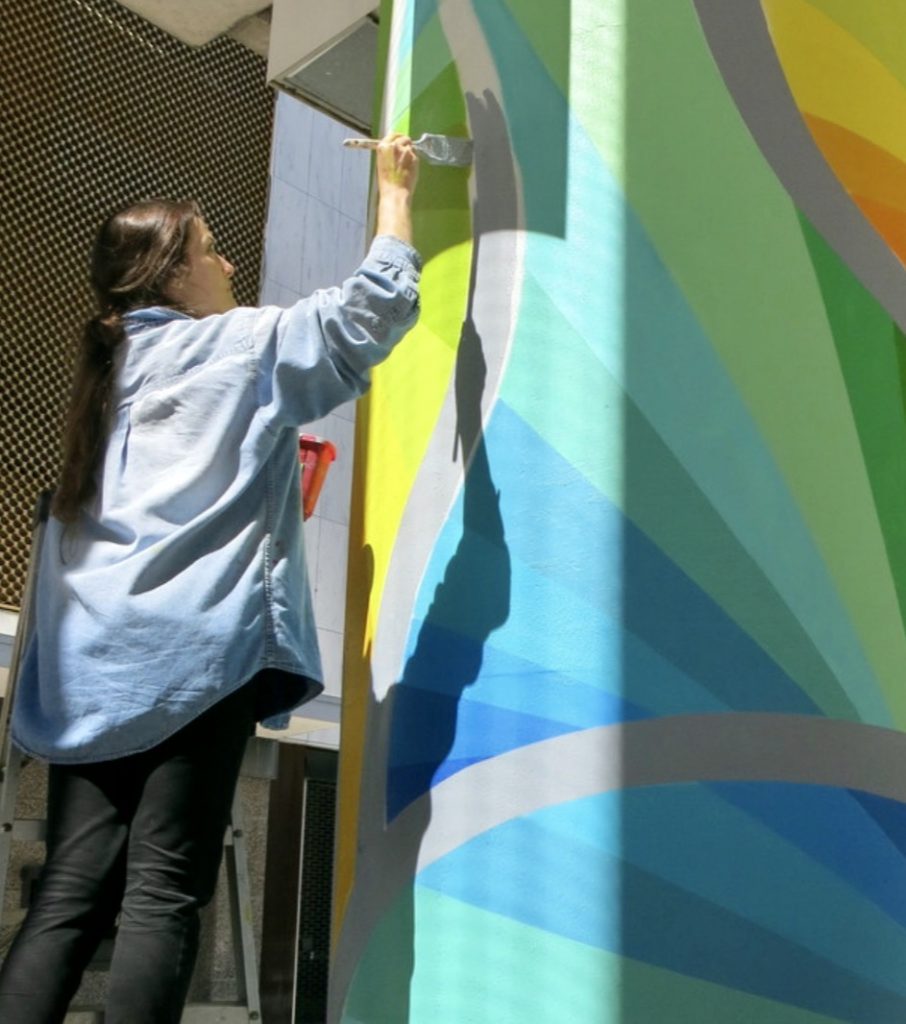
The focus of this exciting project is health and wellness, will culminate in a dynamic and visually engaging mural by Cecilia Lueza, an Argentinian-American artist-based in Tampa Bay. The mural will be the final step in a long process that involves HCC students from its inception. In early 2020 on the HCC Dale Mabry Campus, the public arts committee, the artist, staff, faculty, students, and members of the Tampa Bay community engaged in a comprehensive and interactive discussion that allowed the artist to hear directly from students about how they think about health and wellness, and how this can be interpreted visually. The artist will ultimately,
Based on the winning design, the mural will be an impressive composition of a fit and healthy young person, possibly a student, her head and eyes skyward, all in a palette of vibrant tones, at the prow of a flowing wave of energy that she creates. The image is provocative enough to allow viewers to contemplate the mural’s themes. Health and wellness are more than what we eat or how often we go to the gym. It is a mindset and lifestyle that includes our thoughts and attitude toward life and the energy we create and leave behind us.
Poss expands: “The majority of the mural’s fabrication took place in March and April and we are planning a free public unveiling party and related programming to occur in the Fall of 2020. Everyone who would like to participate in will be encouraged to attend, whether they are a part of the HCC community or a member of the Tampa Bay area community at large.”
To be officially dedicated and unveiled in the Fall of 2020, the mural Exhuberance will be on permanent display on the HCC Dale Mabry Campus in Tampa and will be a visual reminder to the entire community that health and wellness are part of a journey to be embraced that includes more than exercise and nutrition but exposure to the arts, as well.
About the author
Professor Jeffrey Rubinstein is the English Discipline Chair and the college-wide Tenure Committee Chair at Hillsborough Community College in Florida. Based on the Dale Mabry Campus in Tampa, he is a founding member of Grounds4Art@HCC.
About the artist
Argentine American artist and sculptor Cecilia Lueza, studied visual arts at the University of La Plata in Buenos Aires, Argentina. Today, she is well known for creating vibrant public art pieces in a range of mixed media. Since 2000 she has been working on a variety of public art projects in many cities throughout the United States. Her work has been exhibited at Art Miami, Arteamericas, and Scope Miami Beach, and in the last year she completed public art pieces in Washington DC, Jacksonville FL, West Palm Beach, and St Petersburg FL among others.
Additional reading
Maggie Duffy, Bright Spot and Art Reporter
Tampa Bay Times
April 28, 2020

